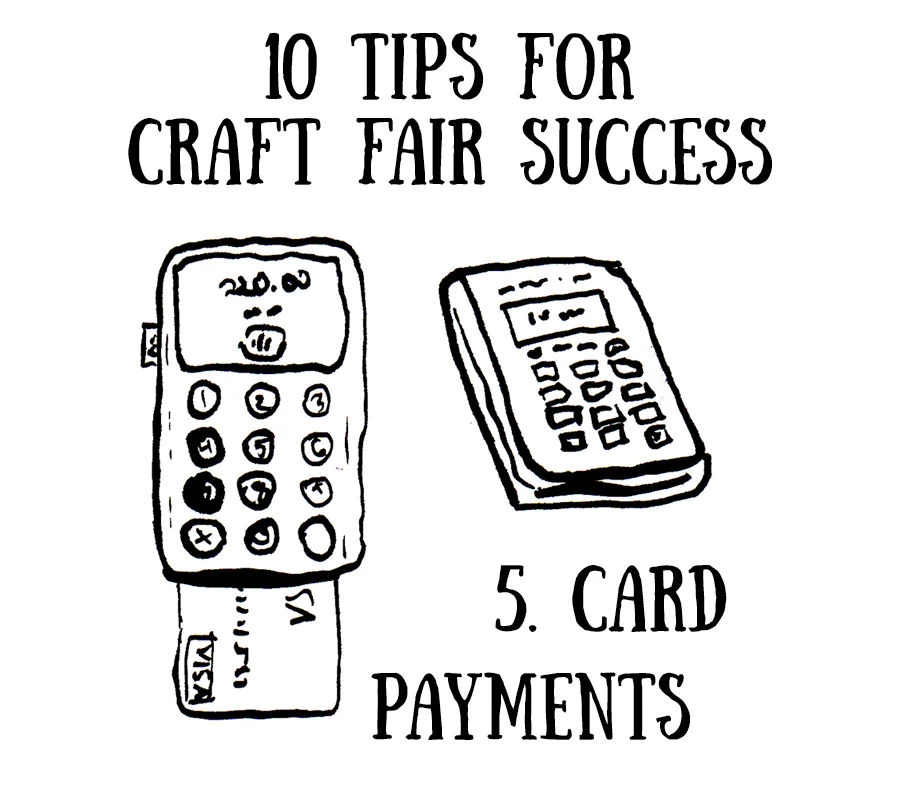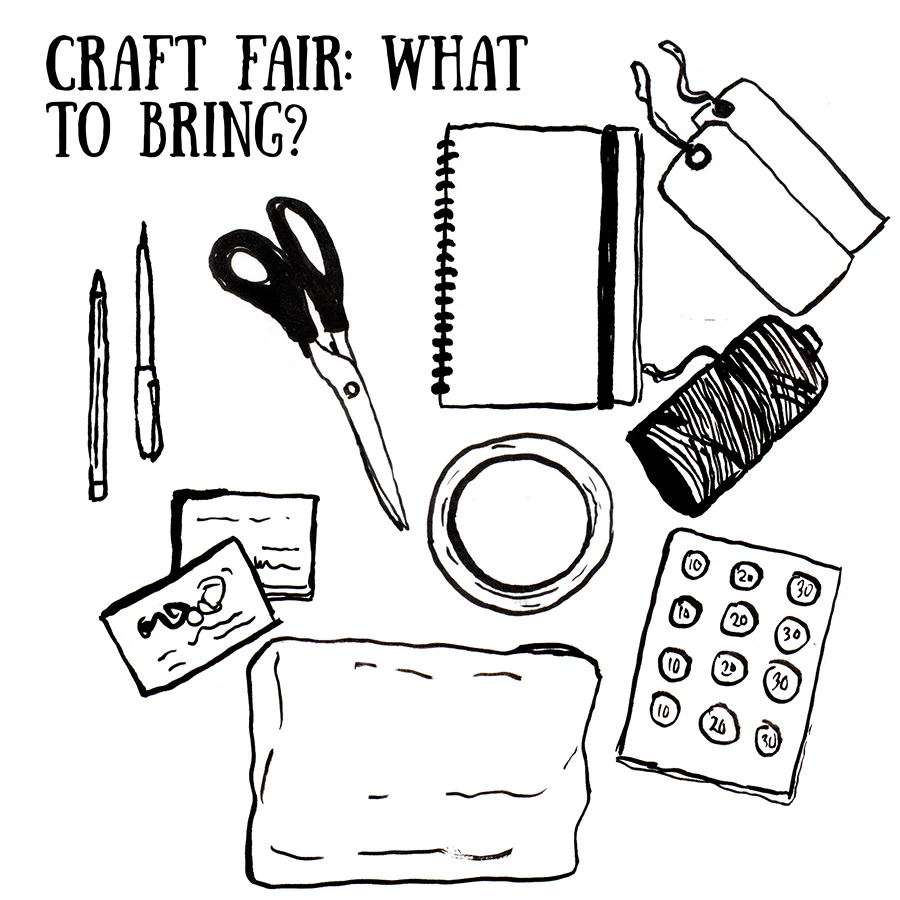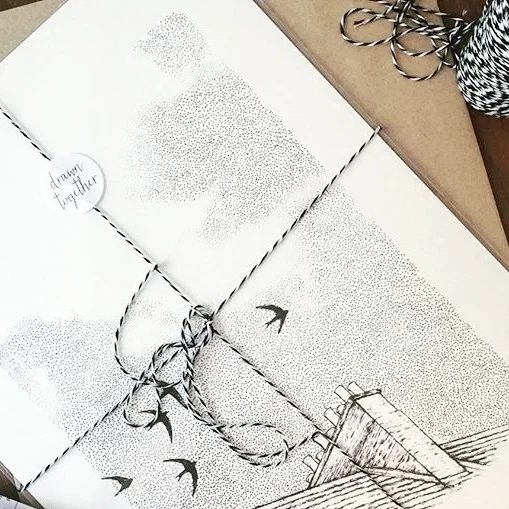10 Tips to Prepare for Craft Fair Success
Thinking about selling your handmade products at a craft fair soon? What are the essentials you need to remember when selling at craft fairs?
Craft fairs are a fantastic way of getting your creative products out to the general public. But, if you have never done it before, it may seem a little over-whelming, knowing how to prepare or even what to bring on the day.
We started Drawn Together 3 years ago and it’s been quite the journey. We’ve certainly learned what to do, and what not to do the hard way! Here are a few things we wish people would have told us when we started out. We have compiled a list of 10 useful steps, with plenty of tips for the new trader, on how to prepare for craft market success.
1. Do your research
Think about what fair, show or market would suit your products. Would your mini-brand work best in a small family oriented market, a country fair, or bustling inner city pop up? If you get the opportunity, try to visit a few local craft fairs, to eye up the competition. How much are traders asking for products similar to yours? Do you think your products would go down well here? How much does a pitch cost? Do you need to bring or hire a table? What is the expected footfall? Will I need insurance to trade? If you can’t visit a market in person, make sure you do thorough research online.
The big craft fairs are likely to be oversubscribed. To avoid disappointment, it might be better to start by applying to a smaller local market. This is also a great way of testing the waters, before moving on to more established fairs or markets. Some of our best markets have been small local ones, but we have also spent our weekend standing in an empty church hall! Make sure you research the market or fair to see that they are doing relevant advertising for the event.
2. Prepare your stock
In our opinion, it is better to have a smaller selection of high quality products on offer, than to overload your stall with lots of stock. If it at all possible, try to offer products in a variety of price ranges. If your products are made to order make sure you bring some samples and a clear instruction on ordering and delivery method.
It can be a little tricky judging how much stock to bring to your first market. Be prepared to adjust your stock levels as you go on. You will soon find out which products are most popular. For your first market try to set a realistic target of what you would like to sell. Bring enough stock to meet your target, then a little extra just in case. Most craft fair organisers will ask you not to pack up before the end of the fair, so it is important to bring enough stock.
3. Think about branding
It is worth thinking about branding, even as a new trader. Branding can start as simple as a logo and a business card. But if you want to go further, a mood board can be useful. Write a short description of your products and explain the story behind your brand. Think about fonts, material, colours and packaging that compliment your products. Try to identify your typical customer. How would your brand appeal to them?
4. Create your stall display
Making an impact with your stall display is important, as it is the customers’ first impression of you and your products. But don’t worry, a great display doesn’t have to cost much to produce. Try to be inventive with the materials you use, and use colours that complement your products. You could try adding personality with some interesting props. Creating height is also a great way of increasing the impact of your stall, and an eye-catching banner will help customers remember you name.
Get the dimensions of your table and create a mock up of your display before the market, to make sure it looks the way you want. We have found mock-up very useful, as often the actual size of the pitch is not quite as big as you might have imagined!
5. Think about payment
When we started accepting card payments our sales more than doubled and now the majority of our sales are made with cards payments. Many companies, such as iZettle and PayPal, now offer affordable card readers, even for small traders. You will have to pay a fee for using a card reader, usually a small percentage of your sales. In our experience, the fee will generally be earned back quickly by the increase of sales from taking card payments. Having a card reader can also encourage customers to buy a more expensive item, or several items, from your stall.
6. Get informed
Make sure you read up on all the information from the event organiser, to avoid any surprises on the day. What is the size of your table or stall? Is there a floor-plan, and where is your stall located on it? How is the parking arrangements at the venue? Is your stall upstairs or downstairs? What time can you set up from? What is the best route to get to the venue? Is there Wi-Fi? Are there mains power sockets near your stall? If you can’t find the information you need in any of the material the organisers have sent you, send them a friendly e-mail to find out.
7. Promote
Make sure you promote the event on social media, as well as telling friends and family, colleagues, or anyone you think might be interested in buying your products. Post pictures of your fair preparation, to build up excitement about the event. We always like to offer our customers a multi-buy deal to encourage sales on the day, or you might want to consider a discount code.
8. What to bring
Our essential Craft Fair Kit:
Stock to sell, tablecloth, props for stall display, trading name sign, price tags or price list, cash box, change for float, mobile phone & charger (or battery pack), business cards or other promotional material, mailing list, pencils and pens, bags or other packaging material, notebook to record sales, sellotape, scissors, string, cleaning cloth, card payment reader (if you have one), copy of your Public Liability Insurance (if needed).
Other things to consider:
How is the lighting at the venue? A battery powered lamp might be useful to illuminate your products in dark venues. A print rack or clothes rail could be handy. Check with the organiser first, to see if these are ok to bring. If possible, take along some work in progress. We like to bring a sketchbook to keep busy during quiet times. Customers will love seeing how your products are made!
9. Get packing
Pack everything you need the day before the event. Don’t forget to charge your card reader if you are bringing one. How will you get your stock safely to the venue? Can you carry everything yourself, or will you need a helping hand? We have certainly been caught out before and barely been able to lift our bags! We now use a large wheelie suitcase. A folding load carrier would be another good option. Print out the directions to the venue, so you can find you way in case of phone or SatNav failure.
10. On the Day
Get an early start to make sure you get to the event on time. Try not to arrive too early though (yes, it does happen), as the event organiser could still be setting up and you might not be allowed in. Find out what time is the earliest you can arrive. You will soon be a pro at setting up your stall, but until you have done it a few times, make sure you give yourself plenty of time!
If it’s your first market it might be a good idea to bring a friend to keep you company and help you out on the day. If you will be selling on your own it can be useful to bring packed lunch, snacks and plenty of water, to keep you going.
Don’t worry if you find it stressful to talk to customers at first. Just try to give off a friendly vibe and have fun. Take clues from customers’ body language. Do they want a quiet browse, or do they look keen have a chat? Smile, engage with costumers and be proud of your products!
Good Luck!







